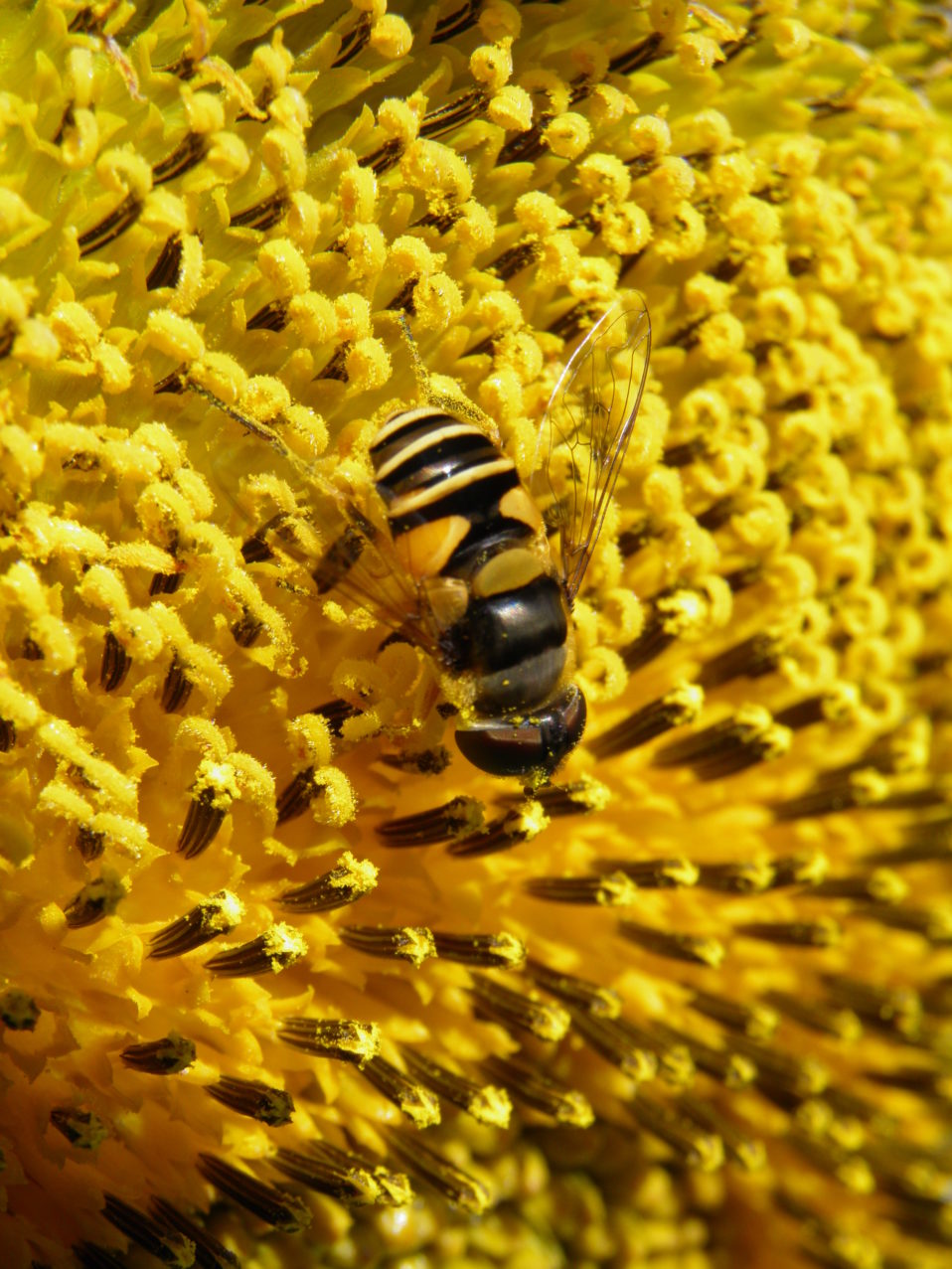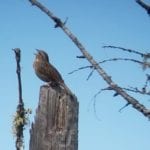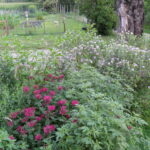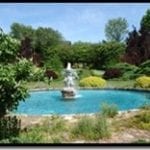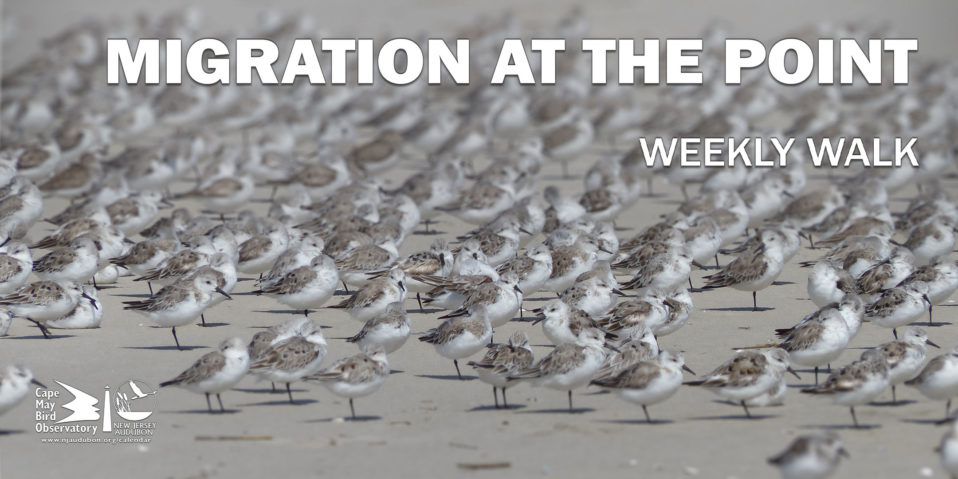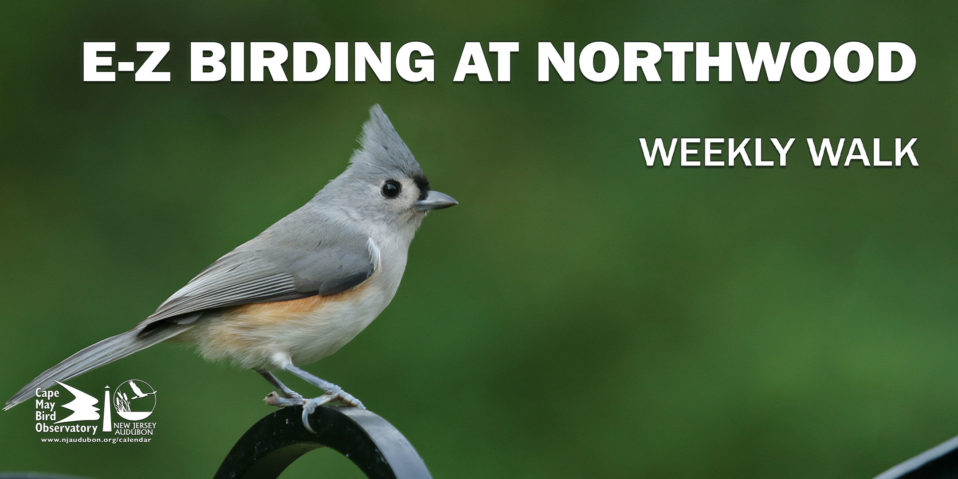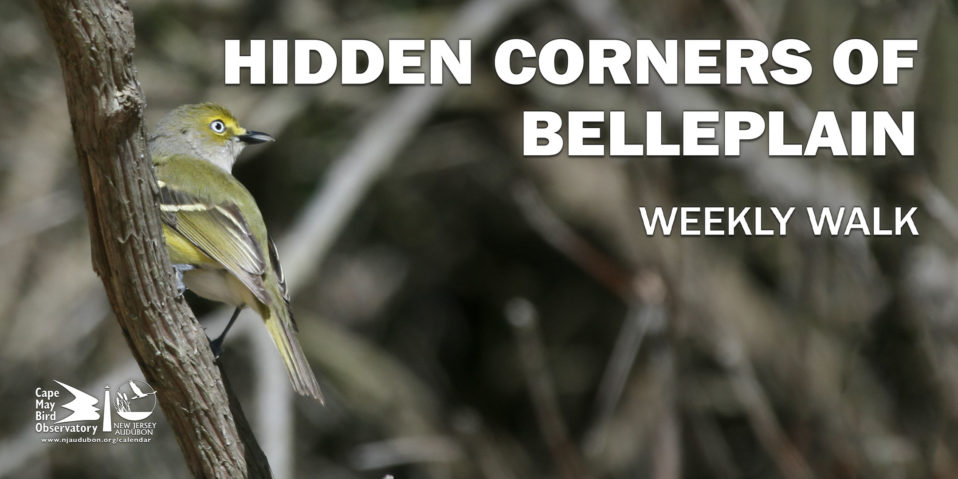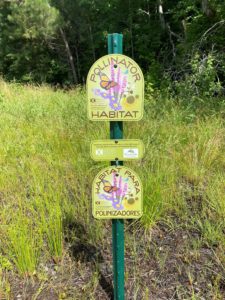
Pollinator Habitat signage provided by the Xerces Society for the each project. Photo by Alyssa Bright
This past June was a “buzz” in the NJ Audubon Stewardship Department as the department received ten Xerces Society pollinator kit grants for installation at several pollinator habitat restoration projects sites across NJ ranging from inner-city community green space areas to rural agricultural areas and yards to public recreation areas to corporate campuses. A total of 7,990 native wildflowers and native grasses were installed by NJ Audubon Stewardship department staff along with volunteers, landowners, NJ Youth Corps of Phillipsburg, Green Teams, scouts (Troop 175 -Port Murray, NJ), and others in efforts to create high quality habitat for pollinators that will be protected and maintained long-term.
“In the short term these plantings will immediately provide forage and host plants needed by various pollinator species,” said Alyssa Bright, NJA Stewardship Technician. “For the long term, these perennial plants will not only continue to provide habitat year after year, but their placement on the landscape provides additional ecological, aesthetic, recreational, social and educational service benefits to the surrounding community and region in which they were planted.”
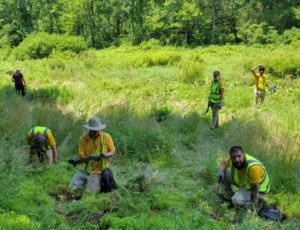
NJ Youth Corps of Phillipsburg assisting NJ Audubon with a Xerces Pollinator kit planting at a site in Warren County that is occupied by the Northern Metalmark Butterfly. The Northern Metalmark is a NJ Species of Special Concern that has been suffering a dramatic decline in New Jersey. Photo by John Parke
According to the Xerces Society, “Pollinators are one of the easiest groups of declining animals to support in not just a rural landscape, but in a residential and urban landscape as well, since even small spaces have the potential to meet the most basic needs of the entire insect life cycle—and even simple changes to our landscaping can make a huge difference to these animals.” Thus, these NJA pollinator projects provide not just critical habitat for these species, but also offer the public educational and advocacy opportunities to promote the importance of improving pollinator habitat through encouraging native plant diversity, the use of native plants for landscaping, and the benefits of pollinators to everyday life. These project sites also provide demonstration areas that is replicable for other properties in their communities to install native plants and embrace an environmental ethic while beautifying the community. It some cases these projects are on public properties which can offer the project area for use as an “outdoor classroom and/or learning center” to the communities to help educate and promote understanding and appreciation of the benefits of clean, green, healthy environments in New Jersey that provide the ecological services that many take for granted.
“Climate change, pathogens, parasites and lack of beneficial native plants due to human land use decisions have had a severe impact on pollinators, said John Parke, Stewardship Project Director. “But backyards, parks, gardens, farms and corporate campuses have significant potential for restoration activities to become critical sites for foraging and breeding of these animals that are vital to the food chain, food webs and essentially all life on earth.”
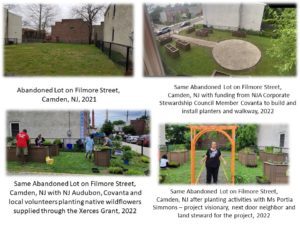
Porter’s Daughters Garden (AKA The Filmore Project) project in Camden. transformed an abandoned lot into a educational community pollinator project. Project partners were Ms Portia Simmons (local resident and project visionary), NJA Corporate Stewardship Council Member Covanta and NJ Audubon. NJA secured grants from The Xerces Society as well as the Franklin Parker Conservation Excellence Grant to fund the project.
It is important to understand that all types of communities can benefit from improving pollinator habitat, especially urban communities which in the past were not typically thought of as offering suitable areas that support a diversity of pollinators. Specially, “Urbanization is an important global driver of biodiversity change, negatively impacting some species groups whilst providing opportunities for others. City sites have lower insect species richness, particularly of Diptera (flys) and Lepidoptera (butterflies & moths), than neighboring rural sites. In contrast, Hymenoptera (bees, wasps, ants), especially bees, show higher species richness and flower visitation rates in cities. Additionally, revealing facets of biodiversity that correlate well with pollination, studies have found that ecotones in insect-friendly “green cover” areas in urban sites can boost pollination. Appropriately managed “green cover” areas in cities could enhance the conservation of Hymenoptera and thereby act as hotspots for pollination services that bees provide to native wildflowers, trees and crops grown in and around urban settings.” (Theodorou, P., Radzevičiūtė, R., Lentendu, G. et al. 2020).
NJ Audubon congratulates the following sites on working with NJ Audubon and the Xerces Society in establishing and /or improving pollinator habitat in NJ!
DSM Nutritional Products, Belvidere, NJ
Porter’s Daughters Garden, Camden, NJ (project partner Covanta, City of Camden)
Riverfront Park- Waterfront East, Rahway, NJ (project partner Covanta, City of Rahway)
Abundance Hospitality, Goshen, NJ
Stone Circle Farm, Cape May Court House, NJ
Flynn/Cleeve Farm, Hope, NJ
Nislick/Marcus Farm, Hardwick, NJ
Brentano/Echo Lake, Westfield, NJ
Krakauer Farm, Tewksbury, NJ
Finn Farm, Frelinghuysen, NJ
NJ Audubon also wishes to thank the Xerces Society and Pinelands Nursery, for these Xerces Society grant opportunities!! NJA also thanks the Franklin Parker Community Conservation Grant for partially funding The Filmore Pollinator Project (Porter’s Daughters Garden, Camden, NJ) and all volunteers that assisted!
For information on how you too can help pollinators in your own backyard, check out NJ Audubon’s Garden for Wildlife series at https://njaudubon.org/gardening-for-wildlife/
Reference: Theodorou, P., Radzevičiūtė, R., Lentendu, G. et al. Urban areas as hotspots for bees and pollination but not a panacea for all insects. Nat Commun 11, 576 (2020). https://doi.org/10.1038/s41467-020-14496-




